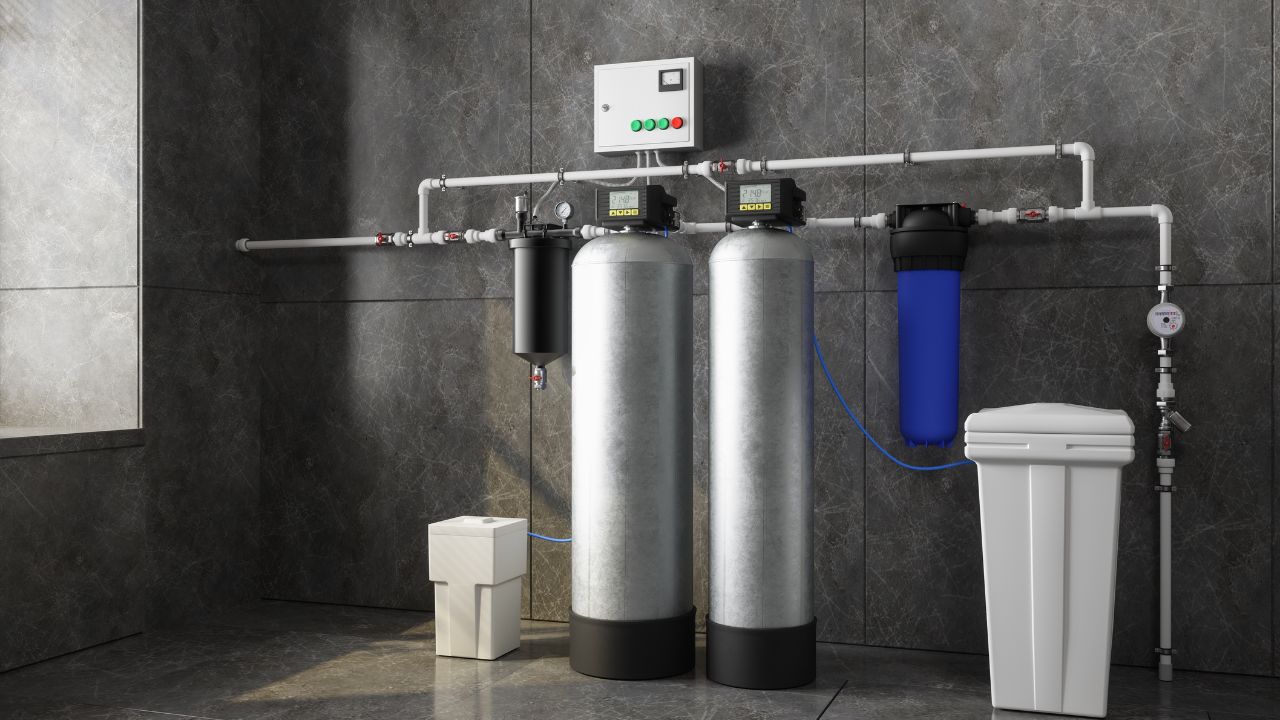No one wants a cold shower unless it’s summer and you’ve been outside all day in 40°C heat. But for the rest of us, hot water is non-negotiable. So what happens when your old system starts sputtering or you’re moving into a new home and need a fresh setup? That’s where hot water system installation and replacement come into play.
Let’s walk you through everything you need to know—from spotting the signs your system is on its last legs to what’s involved in a safe gas hot water installation.
When Is It Time to Replace Your Hot Water System?
Like an old pair of jeans or that kettle with a wobbly handle, your hot water system might still “work,” but it may not be working well. Here are a few clear signs it’s time to upgrade:
- Inconsistent water temperature: Lukewarm showers aren’t fun.
- Leaking water tank: If there’s a puddle around your unit, that’s a red flag.
- Rusty or discoloured water: Not ideal when you’re trying to get clean.
- Noises like popping or banging: That’s not your house settling—it’s sediment buildup.
If any of these sound familiar, it might be time for a hot water tank replacement or even a full gas hot water system replacement.
Gas vs. Electric: Choosing the Right Hot Water System
Gas and electric systems both do the job, but they each have pros and cons. Let’s keep it simple.
Gas Systems:
- Generally cheaper to run over time.
- Heat water faster.
- Still work during power outages (score one for storm season).
Electric Systems:
- Easier to install.
- Good for smaller households.
- May cost more on energy bills unless used off-peak.
If you’re thinking about replacing gas hot water with electric, consider your current setup, energy tariffs, and household usage. If you already have gas connected, it often makes sense to stick with it.
Tools and Materials Needed for Installation
If you’re the hands-on type and wondering how to install a hot water system, here’s a basic list of what you might need (though fair warning—DIY isn’t always the safest choice here):
- Pipe wrench and spanner set
- Plumber’s tape (Teflon tape)
- Pipe cutter
- Gas-approved connectors and hoses
- Safety gear (gloves, goggles)
Still, for many, it’s better to call a professional for gas water heater installation. Messing with gas connections isn’t worth the risk if you’re unsure.
How to Install a Gas Hot Water System in Australia
Thinking of doing it yourself? In Australia, laws require a licenced plumber or gas fitter to handle gas connections. That said, understanding the process helps you make informed decisions. Here’s a step-by-step overview.
- Turn off the gas and water supply.
Obvious? Yes. Essential? Absolutely. - Remove the old system.
This involves disconnecting the water pipes, draining the tank, and safely removing the unit. - Position the new unit.
Your new gas hot water system installation needs to be placed on a stable, flat surface, often on a concrete pad or stand. - Connect the water pipes.
Use proper fittings and sealants. Leaks here can lead to long-term damage. - Connect the gas line.
This part must be done by a licensed gas fitter. Gas leaks aren’t just dangerous—they’re potentially deadly. - Test and fill the tank.
Once installed, slowly open the water supply and check for leaks. Don’t turn the gas back on until water is flowing properly. - Start the system.
Follow the manufacturer’s instructions for how to start a gas hot water system. Usually, this means turning the knob to “pilot,” pressing the ignitor, and waiting for that satisfying whoosh.
Hot Water Cylinders and Tanks: What’s the Difference?
The terms get tossed around like they’re the same—but they’re not. A hot water cylinder typically refers to the internal tank, especially in older or solar systems. A hot water tank is more general and often refers to standard storage units.
When you’re considering hot water cylinder replacement or hot water tank installation, make sure you’re getting the right size and style for your household. Too small and you’ll run out of hot water. Too big and you’re wasting energy.
Switching Systems: From Gas to Electric or Electric to Gas
Making a switch? It’s possible—but it’s not just plug-and-play. A replacement gas hot water system job that turns electric means new wiring, safety switches, and perhaps a change in energy tariffs.
On the flip side, installing a gas hot water system where there was none means:
- Adding gas piping.
- Ensuring proper ventilation.
- Meeting Australian gas safety standards.
Talk to a licenced installer before making the call.
New Gas Bottle, But Still No Hot Water?
You’ve just swapped in a new gas bottle, and… nothing. No hot water. Frustrating, right? Here’s a quick checklist:
- Is the gas bottle turned on properly?
- Did you purge the air from the gas line?
- Has the pilot light gone out?
- Do you need to reset the system?
Understanding how to change a gas bottle for hot water and how to turn off a gas hot water system, Australia style (yes, there’s a process), will save you from freezing showers.
DIY or Hire a Pro?
Let’s be honest—unless you’re a qualified tradie, most folks are better off calling a professional. Here’s why:
- Gas work is heavily regulated in Australia.
- Mistakes can void warranties or home insurance.
- You want peace of mind that the job is safe and legal.
If you’re considering hot water installation, installing a gas hot water system, or any kind of water heater installation, a licenced professional is the way to go.
Costs and What to Expect
No two homes are the same, so costs can vary. But here’s a ballpark for hot water system installation:
| Type | Cost Range (AUD) |
|---|
| Gas Storage System | $1,200 – $2,500 |
| Instantaneous Gas System | $1,500 – $3,000 |
| Replace Hot Water Tank | $1,000 – $2,000 |
| Gas to Electric Switch | $1,800 – $3,500 |
Extras like relocating the system, upgrading pipes, or fitting a tempering valve can increase costs. Always get a written quote.
Maintenance Tips to Keep Things Running
Once your gas hot water installation is done, you’ll want to keep it humming along for years. Here’s how:
- Annual service: A licenced plumber can check the pressure valve, gas burner, and overall system health.
- Flush the tank: Once a year, flush out sediment to avoid overheating and tank damage.
- Check the sacrificial anode: This small metal rod prevents your tank from rusting. Replacing it every 3-5 years can extend your tank’s life.
Conclusion
There’s no universal right answer when it comes to hot water, but understanding your options makes the whole process far less intimidating. Whether you’re dealing with a gas hot water heater replacement, planning a full hot water system install, or just figuring out how to install a hot water system, the key is preparation and safety.
If you’re not 100% confident, call in a licensed professional. A warm shower is great—peace of mind is even better.
FAQs: Hot Water Installation and Replacement
How long does it take to install a new hot water system?
Typically, it takes 2–4 hours for a straightforward replacement. It may take longer for system upgrades or changes in location.
Can I install a hot water system myself?
In most cases, especially with gas, no. You need a licenced plumber or gas fitter in Australia.
What’s the difference between storage and instant systems?
Storage systems keep hot water ready in a tank. Instant systems heat water only when needed.
How do I know if my hot water tank is too old?
If it’s over 10 years old and showing signs of rust or leaks, it’s time to consider replacement.
Do I need council approval for hot water installation?
Not usually, but the work must comply with Australian standards. A licenced installer will handle this.
What if I have hot water but no pressure?
It could be a valve issue, sediment buildup, or plumbing restriction. Time to call in a pro.
What’s the best temperature setting?
60°C is ideal for storage systems. It prevents bacteria but also reduces scalding risk.
Can I switch from electric to gas easily?
Yes, but it involves pipework, venting, and safety checks. Budget accordingly.
How often should I service my hot water system?
YOnce a year is a good rule of thumb. Preventative maintenance beats sudden cold showers.
What’s the average lifespan of a hot water system?
Most last 8–15 years, depending on quality, maintenance, and water quality.






